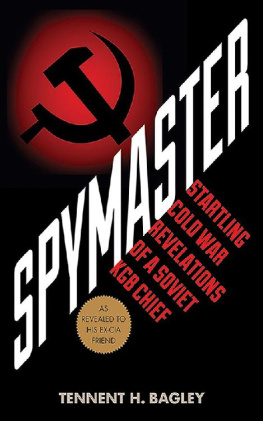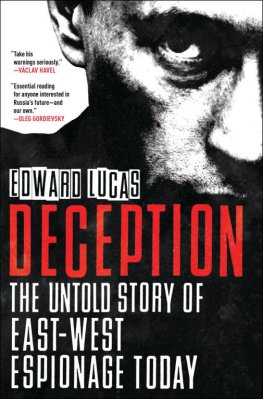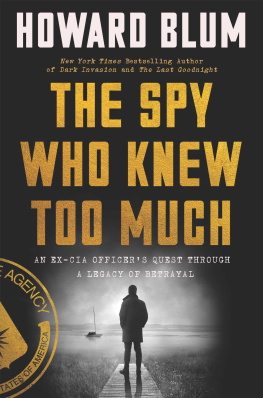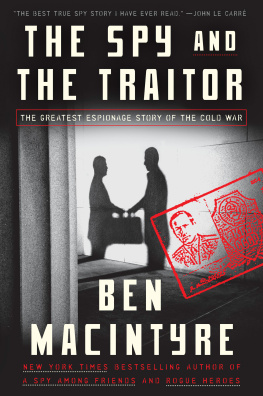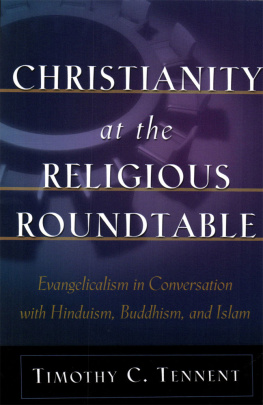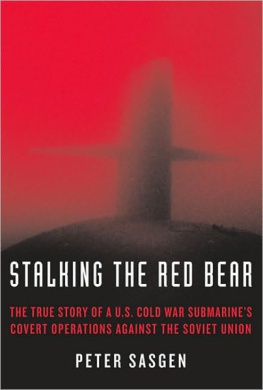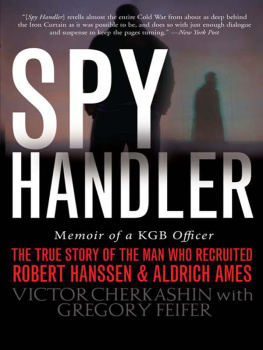Tennent H. Bagley

Skyhorse Publishing
All statements of fact, opinion, or analysis expressed are those of the author and do not reflect the official positions or views of the US Government. Nothing in the contents should be construed as asserting or implying US Government authentication of information or endorsement of the authors views.
Copyright 2013 by Tennent H. Bagley
All Rights Reserved. No part of this book may be reproduced in any manner without the express written consent of the publisher, except in the case of brief excerpts in critical reviews or articles. All inquiries should be addressed to Skyhorse Publishing, 307 West 36th Street, 11th Floor, New York, NY 10018.
Skyhorse Publishing books may be purchased in bulk at special discounts for sales promotion, corporate gifts, fund-raising, or educational purposes. Special editions can also be created to specifications. For details, contact the Special Sales Department, Skyhorse Publishing, 307 West 36th Street, 11th Floor, New York, NY 10018 or .
Skyhorse and Skyhorse Publishing are registered trademarks of Skyhorse Publishing, Inc., a Delaware corporation.
Visit our website at www.skyhorsepublishing.com.
10 9 8 7 6 5 4 3 2 1
Library of Congress Cataloging-in-Publication Data is available on file.
ISBN: 978-1-62873-543-7
Printed in the United States of America
Contents
- : Breaking American Ciphersand Starting a War
- : Two Views of Culture
- : Target: The American Embassy
- : Inside a Deadly Purge
- : Into Foreign Intelligenceand England
- : A Mole and a Tunnel
- : Why Do You Need All Those People Here?
- : A Unique Look at the Hungarian Revolution
- : Spy Center Vienna
- : The KGBs Nazi Underground
- : Richard Sorge Redux
- : Organizing to Disinform
- : Active Measures
- : How Could CIA Ever Have Believed in that Man?
- : The Top Hat Paradox
- : Prague Spring at the Politburo
- : Other Places
- : The Irony of Helsinki
- : Watching It End
Preface
T HIS VOYAGE BACK into the darker regions of the Cold War began in a little country inn in eastern Germany.
As I walked into the sunny breakfast room, the sparkle of silverware on an undisturbed sea of white tablecloths showed me I was early. But not the earliest: a thin and bespectacled man sat alone at a corner table. I recognized him as another participant in the TV production that had brought me to the inn so I walked up to him.
May I join you? I asked.
Please do, he replied with a welcoming gesture toward the seat to his right.
We introduced ourselves, but he evidently knew me already just as I knew him. In fact, this man and I had probably known of each other for more than thirty years. He was Sergey Kondrashev, one of the KGBs most influential figures during the Cold War years, when on the other side I had been supervising CIAs work against his service.
Having long grappled with Soviet deception operations, I was about to breakfast with a man who had run them.
Over orange juice and toast, we talked amicably of our past in the spy game. Kondrashev mentioned that his career in foreign intelligence operations had not started there, but in the KGBs internal-counterintelligence directorate where, in the late 1940s and into the 1950s, he had worked against the American Embassy in Moscow.
That grabbed my interest; I knew that some unsolved mysteries had originated there and then. Old questions rushed to my head. Did I dare ask them of this familiar stranger? Why not? Tell me, then, I said without preamble or explanation, something that has been bothering me for a long time. Why ever did Kovshuk make that trip to Washington?
My breakfast companion had no trouble translating my reference. Vladislav Kovshuk, while heading the KGBs work against American Embassy personnel in Moscow, had travelled to the United States under a pseudonym in early 1957 on a trip that had somehow helped the KGB uncover Americas most important spy in the Soviet Union.
Kondrashev could have deflected the question or pretended ignorance, but instead he answered matter-of-factly and right away, Oh, that was to meet an important agent. After a brief pause he added, One who was never uncovered.
Just ten minutes into our acquaintance, the great Soviet spymaster had thrown out a morsel that convinced me this could be a fruitful relationship. I nodded. Yes, Ive long thought so (as indeed I had), then dropped the subject. To dig for the identity of that still-hidden spy would surely force him to pull back. We smiled at each other, knowing how exceptional our exchange had been.
This astonishing start to a first meeting between former enemies was to set the tone of a relationship that ended only with Kondrashevs death thirteen years later, a tone of affinity, cordiality, mutual respect, and growing confidence between two old professionals.
We were breakfasting there north of Berlin in what had been forbidden territory for me until the recent end of the Cold War. We were not just inside former Communist East Germany, but in the very heart of the once tightly-patrolled Wandlitz area where the Party bigwigs had their summer homes. In this roadside inn in the village of Prenden, we practically sat atop the huge, once-secret underground bunker that would have protected them in case of atomic war.
It was March 1994. A Franco-German TV company had invited retired spy-service veterans, two from the East and two from the West, to chat together about our Cold War in front of the cameras. Along with Kondrashev, the East was represented by the fabled East German intelligence chief Markus Wolf, who had offered the use of his dacha here in Prenden for the occasion. I had already been introduced to Wolf a year earlier in his East Berlin apartment, and we had hit it off well. Later I learned that one reason Kondrashev had been so open with me was that Mischa Wolf, his long-time colleague and friend, had already assured him he could talk confidently with me.
After breakfast I joined the other Western participant, Constantin Melnik, who had overseen the intelligence and security services of France, to walk the few hundred yards along the narrow road to Wolfs dacha. At the gate we introduced ourselves through a speaker-phone and were cheerfully admitted. As we walked the forty yards up to the A-frame cottage set in the forest greenery, I wondered how many Eastern spymasters must have enjoyed Wolfs hospitality here during the Cold War to plot against my country and my service.
We talked for two days in fine spring weather, our round table being a rough-hewn outdoor garden table whenever we were not

The team who made La Guerre des Loups [War of the Wolves] at its first broadcast, Paris, September 1994. L. to R.: Sergey Kondrashev, Tennent H. Bagley, producer Daniel Leconte, Constantin Melnik, author J. M. Meurisse, Markus Wolf, author Maurice Najman.
on the terrace sipping drinks, or inside dining on the pelmeni dumplings that were Mischas culinary specialty.
Later that year we reassembled in Paris for the first TV broadcast of the film documenting our talks. Finally, we came together in 1996 in Sochi, Russia, where our public exchange was one event of an international film festival.

